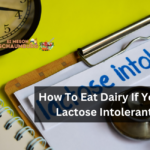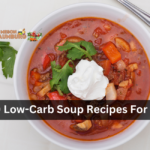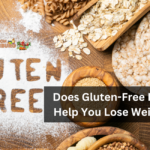A Keto diet is based on a diet of high-fat, low-carb foods. This diet allows a variety of animal proteins, dairy products, vegetables, and other plant-based foods, as well as lipids and oils.
The increasing prevalence of the ketogenic diet is mainly attributable to its potential benefits for weight loss and blood sugar control.
Additionally, preliminary evidence suggests that this low-carb, high-fat diet may aid in treating certain malignancies, Alzheimer’s disease, and other conditions. However, higher-quality research is still required to determine the long-term security and efficacy of the keto diet.
The ketogenic diet restricts daily carbohydrate consumption to 20. 50 grams.
While some keto dieters track their total carbohydrate intake, others track their net carbs. Net carbs are total carbohydrates minus fiber. Due to the indigestibility of fiber, they cannot break it down and assimilated by the body.
What Foods To Eat In A Keto Diet?
Here are many to you to eat in a keto diet. This diet may appear complicated, but it permits the consumption of many nutritious foods.
Animal Proteins
On the keto diet, you may eat a variety of nutritious foods.
Sea food
Fish and crustaceans are highly keto-compatible. Not only are salmon and other fish nearly devoid of carbohydrates, but they are also rich in B vitamins, potassium, and selenium.
However, carbohydrate content in shellfish differs by species. While shrimp and most crustaceans lack carbohydrates, oysters and octopuses do. You can still consume these foods on the ketogenic diet, but you must carefully track their carbohydrate content to remain within your range.
In addition, salmon, sardines, mackerel, and other fatty fish are rich in omega-3 lipids, which have been linked to reduced insulin levels and increased insulin sensitivity in overweight and obese individuals.
Frequent fish consumption is associated with enhanced brain health and lower disease risk.
The American Heart Association advises individuals over 18 to consume 8? 10 ounces of seafood per week.
Meat and poultry
On the ketogenic diet, only poultry and meat are considered staple items.
Fresh meat and poultry are carbohydrate-free and abundant in B vitamins and essential minerals. In addition, they are an excellent source of high-quality protein, which may aid in preserving muscle mass during a very low-carb diet.
In a limited study of older women, a diet high in fatty meat was linked with 8% greater amounts of good cholesterol, or HDL, than a diet low in fat and high in carbohydrates.
Grass-fed meat may be the best option because it contains more omega-3 lipids and conjugated linoleic acid (CLA) than grain-fed meat.
Eggs
Eggs are an excellent source of protein.
Since each big egg includes less than 1gm of carbohydrates and approx 6 gm of protein, they may be suitable for keto diets.
In addition, eggs have been seen to stimulate hormones that heighten satiety.
Consuming whole eggs rather than egg whites is essential because the yolk contains most of an egg’s nutrients. It includes the eye-protecting antioxidants lutein and zeaxanthin.
Despite their high cholesterol content, egg yolks do not appear to increase the risk of cardiac disease.
Dairy And Dairy Alternatives
On the keto diet, you may eat a variety of nutritious foods.
Cheese
There are countless varieties of cheese, the vast majority of which are low in carbohydrates and high in fat, making them ideal for the ketogenic diet.
Only 1 ounce (28 grams) of cheddar cheese contains 1 gm of carbohydrates, 6 gms of protein, and a substantial quantity of calcium.
Cheese is high in saturated fat, but there is no evidence that it increases the risk of cardiovascular disease. Several studies indicate that it may help prevent this condition.
Additionally, cheese contains CLA, which has been associated with fat loss and enhancements to body composition.
In addition, regular cheese consumption may prevent the age-related decline of muscle mass and strength.
In a 12-week study of senior adults, those who consumed 7 ounces (210 gm) of ricotta daily lost less muscle mass and strength than those who did not finish this amount of cheese.
Here are some low-carb cheeses suitable for a ketogenic diet.
List of keto cheeses
- Aquamarine cheddar
- Brie
- Cheese Camembert
- Cheddar cheese
- The horse
- Colby’s jake
- Casein cheese
- Whipped cheese
- Feta
- Capra cheese
- The halloumi
- Havarti cheese
- The Limburg
- The cheese Manchego
- The mascarpone
- Mozzarella cheese
- The city of Muenster
- Parmesan cheese
- The pepper jack
- The cheese provolone
- A Roman
- Cheddar cheese
- Swiss cheddar
Plain Greek yogurt and cottage cheese
Greek yogurt and cottage cheese are protein-rich, nutrient-dense consumables. While they contain carbohydrates, you can consume them in moderation while on the keto diet.
Both yogurt and cottage cheese have been demonstrated to suppress appetite and promote satiety.
Either makes a delicious snack, but you can combine it with chopped nuts, cinnamon, or other seasonings to create a quick keto snack.
Cream and half-and-half
The fatty fraction of fresh milk separated during milk processing constitutes cream. On the other hand, half-and-half is composed of 50% cream and 50% whole milk.
These two dairy products are deficient in carbohydrates and high in fat, making them optimal for the ketogenic diet.
As with other fatty dairy products, butter, and cream are abundant in CLA, which has been shown to promote fat loss.
Despite this, cream and half-and-half should be consumed in moderation.
According to the American Heart Association’s nutritional advice for 2021, individuals should limit foods elevated in saturated fat. Substituting plant-based lipids or polyunsaturated fats for animal and dairy fats is associated with a reduced risk of cardiovascular disease and stroke.
Some studies suggest that high-fat dairy products may not be as strongly associated with cardiovascular disease. Moderate consumption of dairy products high in fat could lower the risk of body stroke and heart attack. The evidence, however, remains equivocal.
It is an ongoing topic of debate that can depend on various variables, such as the degree of food processing.
Cream and half-and-half are popular additions to coffee and substitutes for small quantities of milk in keto recipes.
Vegetable
On the keto diet, you may eat a variety of nutritious foods.
Green leafy vegetables
Green verdant vegetables are shallow in carbohydrates, making them an ideal keto food. In addition, they are abundant in antioxidants, minerals, and vitamins.
Especially rich in vitamin K and iron are dark leafy greens, such as kale, spinach, and collard greens.
Greens lend bulk to meals without significantly increasing carbohydrate content. In addition, herbs like oregano and rosemary add flavor while contributing almost no carbohydrates.
Here are some leafy greens that are keto-friendly:
- Lettuce, baby spinach, arugula, escarole, and frisee are salad greens.
- Bok choy, collard greens, mustard greens, kale, cabbage, Swiss chard, and spinach are cooking greens.
- Thyme, sage, mint, lemongrass, dill, parsley, cilantro, basil, rosemary, and oregano are examples of herbs.
Peppers
There are numerous pepper varieties, all of which are suitable for the ketogenic diet. Although they are technically fruits, they are cooked as vegetables.
Jalapenos are ideal for creating keto-friendly appetizers because they contain a small amount of heat. It can use Large, moderate peppers such as bell peppers and poblanos in various dishes or stuffed to create flavorful, low-carb main courses.
Additionally, peppers are a wealthy source of vitamin C. One bell pepper contains 107 percent of the daily value (DV) for vitamin C.
Summer squash
Summer squashes, such as courgette and yellow zucchini, are incredibly versatile and low in carbohydrates.
Zucchini is very popular on the keto diet. With a spiralizer, zucchini noodles are readily chosen, an ideal option for spaghetti or noodles.
It can substitute grated zucchini for rice or be added to baked products without altering flavor. You can also use a mandoline to slice it thinly, then toss it with olive oil, salt, and pepper for a chilled salad.
Other plant-based foods
On the keto diet, you may eat a variety of nutritious foods.
Nuts and seeds
Nuts and seeds are nutritious, fat-rich, and low in carbohydrates.
Regularly eating nuts is linked with a lower risk of cardiovascular disease, certain cancers, melancholy, and other chronic diseases.
Moreover, nuts and seeds are rich in material, which can help you feel satisfied and reduce your calorie intake naturally.
Although most nuts and seeds are low in net carbohydrates, the amount differs significantly by variety. The foods with the fewest carbohydrates, and thus the finest for keto, are:
- The almonds
- The macadamia fruit
- The nuts pecans
- A walnut
- Chia kernels
- The flaxseeds
Berries
Most fruits are too rich in carbohydrates to consume on the ketogenic diet, but berries are an exception.
Especially raspberries and strawberries, berries are low in carbohydrates and high in fiber. While blackberries and blueberries contain fewer carbohydrates than other fruits, they may not be suitable for keto regimens.
These miniature fruits are lade with anti-inflammatory and disease-preventing antioxidants.
cocoa powder and dark chocolate
Cocoa and dark chocolate are tasty sources of antioxidants.
Flavanols, found in dark chocolate, can lower the risk of heart attack and stroke by regulating blood pressure and maintaining healthy arteries.
Surprisingly, you can consume chocolate on the keto diet. However, it is essential to select dark chocolate containing at least 70% cocoa solids. Preferable more? And to finish it in moderation.
Beverages
On the keto diet, you may eat a variety of nutritious drinks.
Coffee and tea are healthy, carb-free drinks
They contain caffeine, which stimulates the metabolism and may enhance physical performance, alertness, and mood.
Moreover, research indicates that coffee and tea drinkers have a substantially lower risk of developing diabetes. Those with the highest coffee consumption have the lowest chance, although the cause-and-effect relationship has not been established.
Adding a lot of cream to coffee or tea is acceptable. Still, you must avoid “light” coffee and tea lattes while on the ketogenic diet because they are prepared with nonfat milk and high-carb flavorings.
The ketogenic diet may benefit weight loss, blood sugar control, and other health objectives. However, its low-carbohydrate and high-fat approach may appear excessively restrictive, especially initially. Nonetheless, this diet allows for various nutritious, tasty, and adaptable foods that enable you to remain within your daily carbohydrate allowance. To obtain all the health benefits of the keto diet, consuming a wide variety of these foods is best.
Thank you for reading…..










